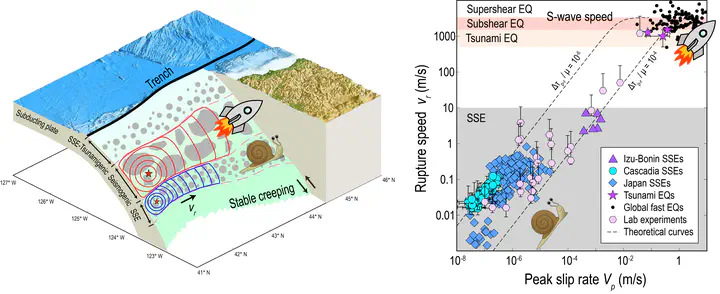Slow and fast earthquakes

Regular earthquakes suddenly release elastic energy accumulated underground and radiate strong seismic waves, while slow earthquakes (“slow slip events”) act silently without detectable seismic waves. Because slow slip events occur worldwide and could trigger devastating earthquakes, geophysicists are particularly interested in understanding their fundamental mechanics and their relationship with the fast, damaging earthquakes. A yet unsolved piece of the puzzle is the empirical relation between the magnitude and duration of both types of earthquakes: it is still debated whether or not this relation is similar for slow slip events and regular earthquakes.
We found that both slow and fast earthquakes can be understood by a new theory of dynamic fracture mechanics. This theory accounts for an essential ingredient that was missing in previous models and experiments, the “finite seismogenic depth”: the portion of the fault that slides during a large event has a limited depth extent, shorter than its horizontal length. The predictions of the new model are supported by validations against earthquake simulations and observations.
The work provides insight on how earthquakes can develop a broad spectrum of rupture speeds, from arbitrarily slow ones to seismic wave speeds. In particular, the new model shows how earthquake rupture speed is controlled by a non-dimensional number arising from energy balance: the ratio between the available elastic energy and the energy dissipated by fault slip. The model also reconciles the debated observations of the relation between magnitude and duration of slow slip events. It explains how this relation can be similar to that of regular earthquakes when focusing on events from a single region, but radically different when combining observations from multiple regions.